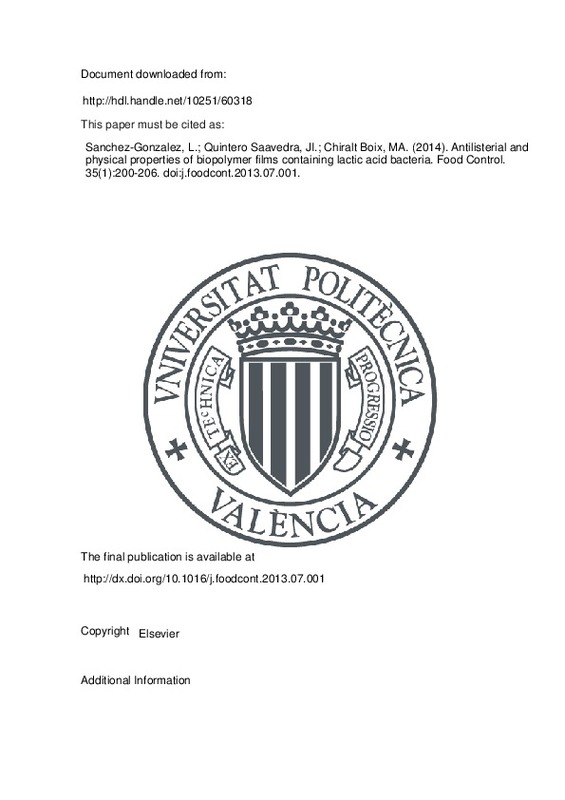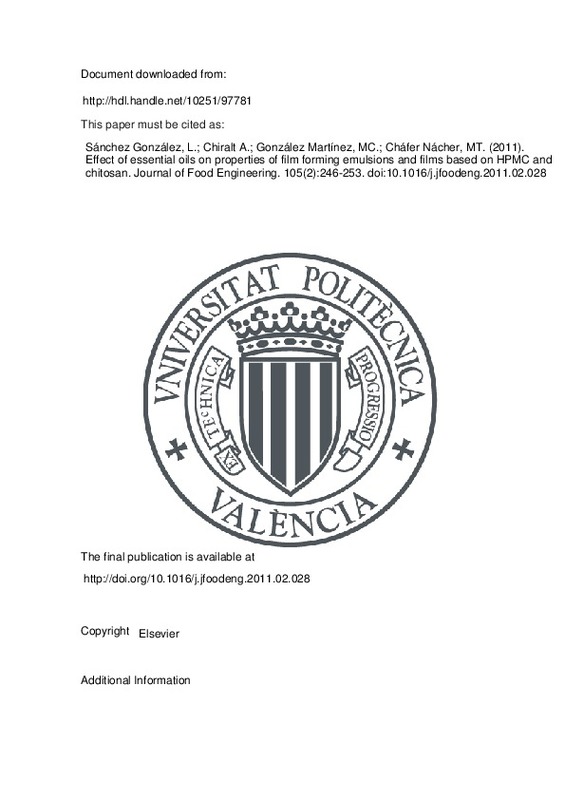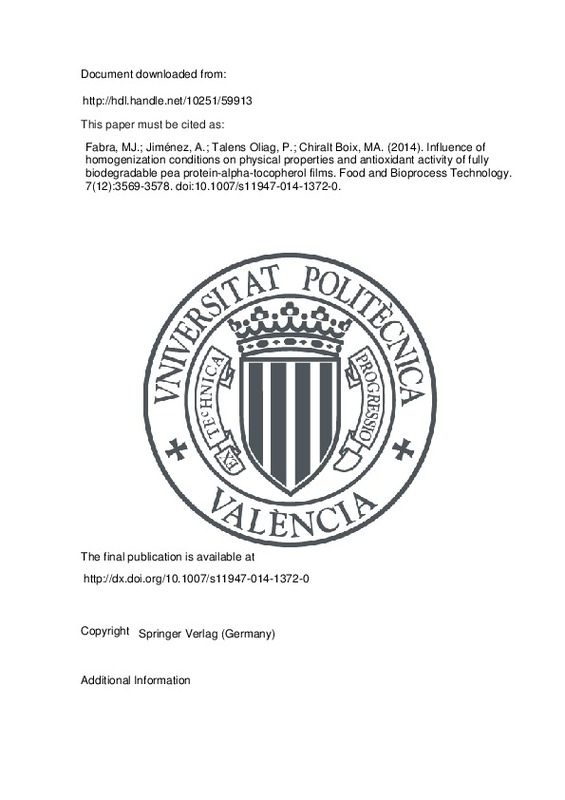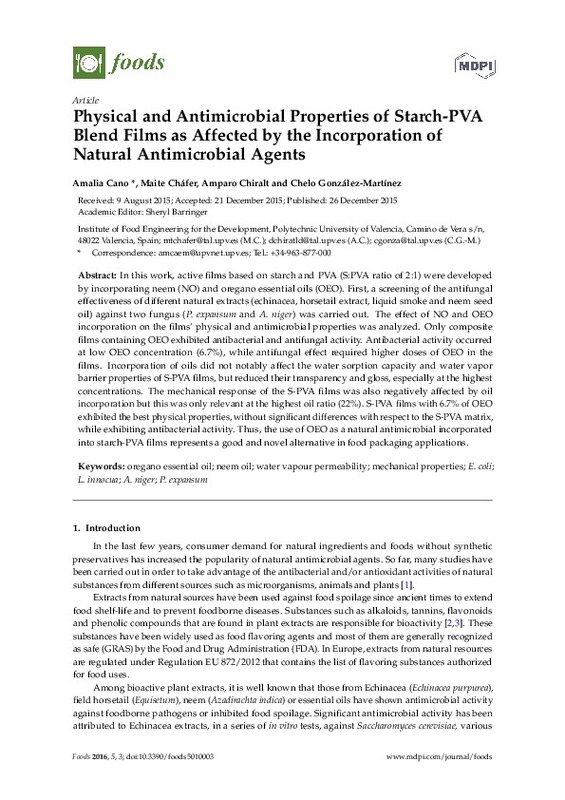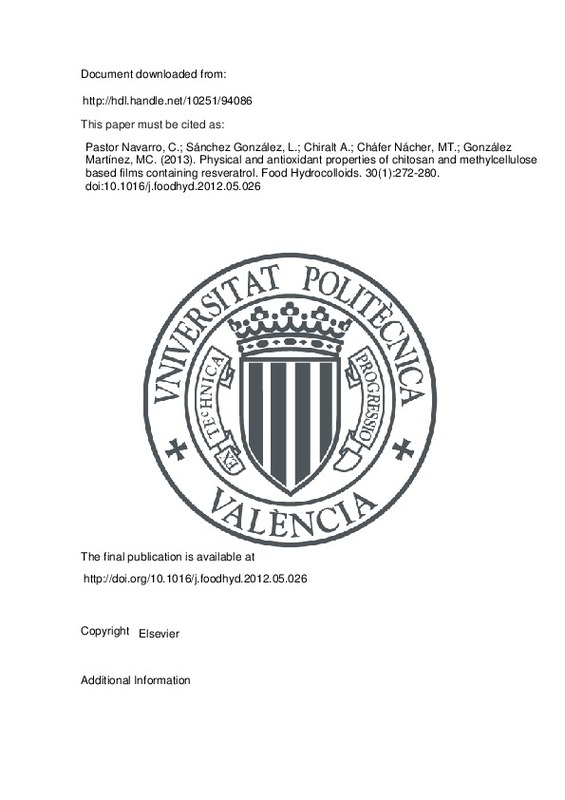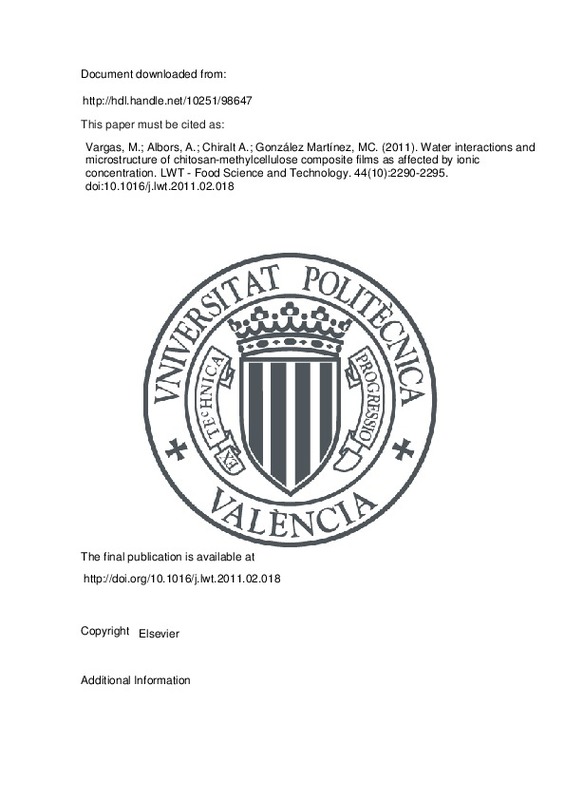

Listar por palabra clave "Water vapour permeability"
RiuNet: Repositorio Institucional de la Universidad Politécnica de Valencia
- RiuNet repositorio UPV
- :
- Listar por palabra clave
JavaScript is disabled for your browser. Some features of this site may not work without it.
Buscar en RiuNet
Listar
Mi cuenta
Ayuda RiuNet
Admin. UPV
Listar por palabra clave "Water vapour permeability"
Mostrando ítems 1-9 de 9
-
Sanchez-Gonzalez, L.; Quintero Saavedra, Jorge Ivan; Chiralt, A. (Elsevier, 2014-01)Novel biopolymer films were developed and used to control Listeria innocua in an artificially contaminated synthetized medium. Two hydrocolloids, sodium caseinate (NaCas) and methylcellulose (MC), and two bacteriocin-producing ...
-
Sánchez González, Laura; Chiralt, A.; González Martínez, María Consuelo; Cháfer Nácher, María Teresa (Elsevier, 2011)[EN] Film-forming dispersions (FFD) and films, prepared by incorporating different concentrations of bergamot (BO), lemon (LO) and tea tree (TTO) essential oils into hydroxyproplymethylcellulose (HPMC) and chitosan (CH) ...
-
Vargas, Maria; Perdones Montero, Ángela; Chiralt Boix, Mª Amparo; Cháfer Nácher, María Teresa; González Martínez, María Consuelo (Elsevier, 2011-07)Film-forming dispersions (FFD) based on high molecular weight chitosan (CH) alone or in combination with oleic acid (OA) were prepared under different homogenization conditions (rotor-stator or rotor stator together with ...
-
Fabra, M. José; Jiménez, Alberto; Talens Oliag, Pau; Chiralt, A. (Springer Verlag (Germany), 2014-12)In this study, antioxidant biodegradable films based on pea protein and alpha-tocopherol were successfully developed by solution casting. The effect of both the homogenization conditions (rotor stator and microfluidizer) ...
-
Cano Embuena, Amalia Isabel; Cháfer Nácher, María Teresa; Chiralt, A.; González Martínez, María Consuelo (MDPI, 2016)[EN] In this work, active films based on starch and PVA (S:PVA ratio of 2:1) were developed by incorporating neem (NO) and oregano essential oils (OEO). First, a screening of the antifungal effectiveness of different ...
-
Pastor Navarro, Clara; Sánchez González, Laura; Chiralt, A.; Cháfer Nácher, María Teresa; González Martínez, María Consuelo (Elsevier, 2013)[EN] New trends in edible films focus on the improvement of their functionality through the incorporation of active compounds, such as antimicrobial or antioxidant agents. Resveratrol is a natural antioxidant found in a ...
-
Cano Embuena, Amalia Isabel; Fortunati, Elena; Cháfer Nácher, María Teresa; Kenny, J.M.; Chiralt, A.; González Martínez, María Consuelo (Elsevier, 2015-06)[EN] Pea starch (S) and poly(vinyl alcohol) (PVA) blends with different ratios were produced in order to elucidate the possible advantages of blend films to overcome the common drawbacks of starch films. Starch, poly(vinyl ...
-
Cano, A.; Andrés, M.; Chiralt Boix, Mª Amparo; González Martínez, María Consuelo (Elsevier, 2020-03)[EN] In this study, three tannins from different sources have been used (from white peel grape (W), red peel grape (R) and from oak bark (O)) to obtain active films based on proteins (caseinate and gelatin) on the basis ...
-
Vargas, Maria; Albors, A.; Chiralt, A.; González Martínez, María Consuelo (Elsevier, 2011)[EN] Edible films based on high molecular weight chitosan (CH) and methylcellulose (MC) were obtained by mixing different ratios (0:1, 0.5:1.5, 1.0:1.0, 1.5:0.5 and 1:0) of the biopolymers in two solvent conditions (0.95 ...
Mostrando ítems 1-9 de 9

Universitat Politècnica de València. Unidad de Documentación Científica de la Biblioteca (+34) 96 387 70 85 · RiuNet@bib.upv.es


